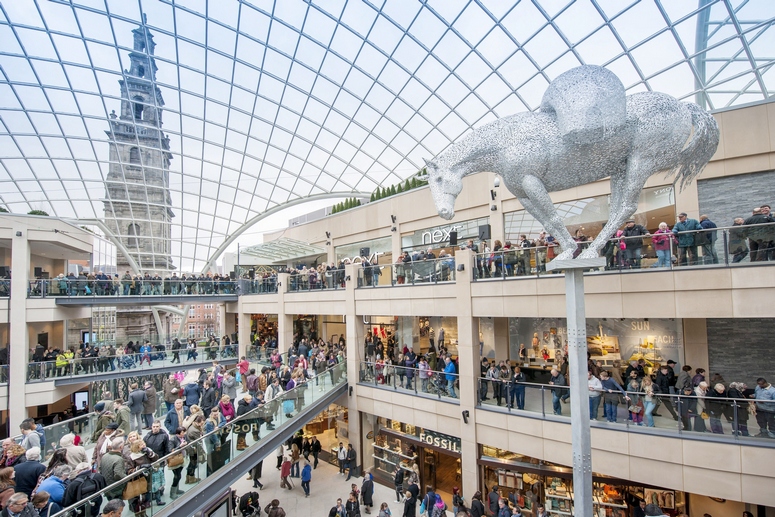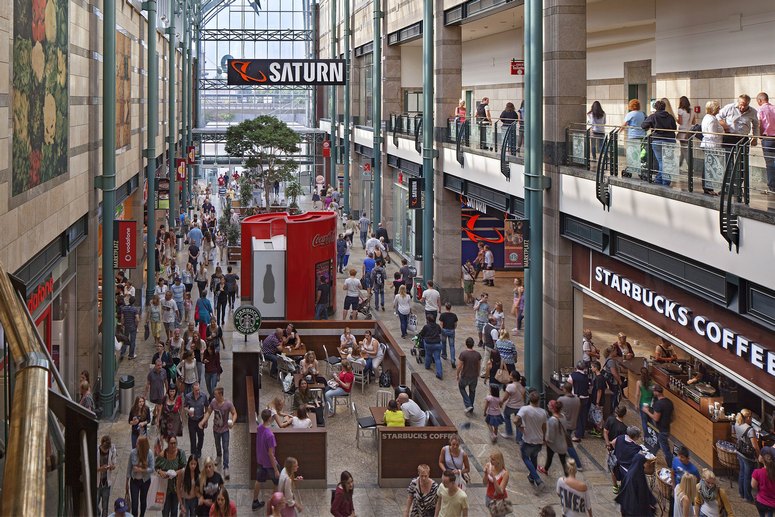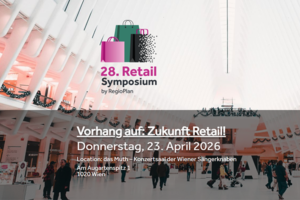BY STEFFEN HOFMAN
In our previous KPI analysis, we highlighted the importance of four industry-specific KPIs:
- Footfall
- Sales
- Space productivity
- Occupancy cost ratios
There are comprehensive retail market reports and ever so formidable research studies available – free of charge – on individual sub-classes and markets to educate investors on current and historic overall market volatility, observed movements in the yield curve, and estimated rental growth rates. Nevertheless, we simply need to dig deeper to get to the bottom of successful investment performance, in particular when it comes to allocating capital in the complex specialist sector of shopping centers.
This time, our analysis focuses on the relevance (or irrelevance!) of gross yields and net yields as widespread industry measures. To be blunt, judging the quality of a deal by one of these two indicators is not good enough! We have covered the reasons already. Having said that, understanding exactly why gross and net yields sometimes vary significantly is hugely important for investors when drawing up asset management strategies aimed at delivering their individual return targets.
What is the difference between gross and net yields?
Yields give a static snapshot of the return of an investment at a certain point in time. Gross yields are calculated by dividing the annual gross rental income of an asset by the market value (shown as a percentage, e.g. 5.15% GY). Net yields are used more frequently nowadays than gross yields, which is good. Taking non-recoverable operational expenses into account, net yields communicate a more precise view and thus enhance transparency for investors. From a Landlord’s point of view, they are the result of deducting non-transferable operational costs from an asset’s gross rental income and dividing this figure by the market value determined at a certain valuation date.
Unless they are successfully passed on to the occupiers by negotiating rigorous lease agreements, a certain level of non-transferable costs will usually result from some of the following:
- property taxes and insurance
- capped service charge arrangements
- property/center/marketing/facility management costs
- compulsory landlord contributions to marketing funds
- ongoing letting fees
- repairs & maintenance
- vacancy costs
Implementing the famous “triple net lease,” a lease whereby the tenant pays the rent to the Landlord as well as all taxes, insurance, maintenance, and management expenses that arise from the use of the property, is admittedly difficult to establish across the entirety of tenants in a shopping center with as many as 100, 150, or in some cases even 250+ stores. As somebody once said: “A compromise is the art of dividing a cake in such a way that everyone believes he has the biggest piece.”
Why do gross and net yields sometimes vary significantly?
Transparency to investors is treated as a matter of highest importance to both investment managers and asset managers, e.g. when recommending new acquisitions or disposals or, depending on the structure of a mandate, when making major discretionary investment decisions on behalf of their clients. Since Lehman, sophisticated investors have stopped buying shopping centers by offering bold multipliers on gross rental income at the acquisition date. What counts in the underwriting of well thought-out business plans is the bottom line, i.e. cash flows and the evolution of the net operating income (NOI) during an asset’s holding period.
When speaking about European shopping centers, the difference between gross and net yields can be perplexing. The leakage caused through non-transferable operational expenses can mount up to immense sums and erode the rental income considerably. In 15 years of niche sector experience and working in nine different legislations across Europe, our team has seen NOI leakage varying between 2% and well above 30% of the gross rental income (p.a.). In one exceptional case, we were gobsmacked to discover a lease structure that eroded as much as 45% of the gross rental income!
Due to varying local market standards, triple net leases are more likely to be accepted in the UK, while Poland and the Czech Republic also stand out among CEE countries for their excellent cost recoverability. For German shopping centers, however, the recoverability depends on the wording of the individual lease contract – everything is recoverable in principle as long as it is explicitly agreed and transparently listed in the lease agreement, so you better pick the right one! In Austria in turn, the costs for property tax and insurance by law always stay with the Landlord. Be that as it may, Austrians have huge cakes anyway…
Take a good look! Non-recoverable cost positions tell a story…
When looking closely and attentively analyzing the property cash flows of standing assets over a certain period, the sheer evolution of non-recoverable cost positions sometimes tells its own story. For the interested reader, we have summarized the most common stories below:
When non-recoverable costs range from 2-4% of gross rental income (GRI) (p.a.):
Best-in-class ratios! Such quotas can be considered an outstanding achievement of the leasing team and are the result of the excellent quality of the standard lease contracts put in place, which allow for optimal cost recoverability across all tenancies. There is very limited income shortfall, mostly triggered through capped service charge arrangements with important anchor tenants or key retailers, which drive footfall and attract customers to the mall.
In these cases, net yields obviously won’t differ much from gross yields. The low level of non-recoverable costs adds to the overall investment success. A minimal level of leakage predestinates such assets to deliver an attractive and steady income yield to investors and also forms the optimal basis for generating outperforming total returns well above industry benchmarks.
When non-recoverable costs range from 5-9% of GRI (p.a.):
This category of assets also shows what we would still classify as a low level of non-recoverable costs. The above range is actually very typical for good, stable, modern shopping centers. Below-average void rates and a negligible volume of tenant defaults can often be observed in such schemes.
It should be noted, however, that net yields here start to drift away from gross yields by approximately 20-50 bp. A good revenue stream offers attractive opportunities for annual dividend payments to investors. Asset management initiatives can be funded out of revenue. Debt-service-cover ratios are usually not affected negatively from this level of leakage.

When non-recoverable costs range from 10-16% of GRI (p.a.):
Such moderate levels of non-recoverable costs are not unusual, in particular for older properties with asset management potential. When this ratio gradually grows from year to year, the need to replace technical equipment should be carefully investigated. In conjunction with lease renewals or releasing activities, the willingness of individual retailers to widen their participation in landlord costs might depend on an owner’s willingness to invest in the future positioning of the asset.
Watch out! Net Yields for assets of this quality start to differ from their gross yields by approx. 50-100bp. The good news for active asset managers is that, as long as OCRs look healthy, the lease renewal phase could offer an attractive opportunity to rectify the situation and gradually enhance the net operating income by way of tactically introducing service-charge-repair-kits whenever possible. A downside risk is that such tremendous leakage amounts start to put restraints on potential asset management initiatives, primarily if a steady distribution yield has to be matched and such initiatives can’t be funded out of revenue anymore.
When non-recoverable costs range from 17-24% of GRI (p.a.):
This ratio represents a really high level of non-recoverable costs and is particularly critical if not discovered during the due diligence phase prior to an asset acquisition. Above-average void rates in combination with weak standard lease contracts are frequently found in such assets. Tenant-friendly lease contracts indicate that it was difficult to lease-up the scheme in a previous leasing campaign. In particular in the case of small, vertical shopping centers, the sheer costs of mall operation could be too high against the total income stream being generated through this asset. In older schemes, there might be a need for a substantial facelift (incl. replacement of technical equipment). To play it safe, the quality and efficiency of the operational management team also needs to be put to the test at that level of leakage.
Interestingly, for experienced asset managers and sector specialist, this income profile might offer a rare opportunity to achieve extraordinary value creation. There is usually a good level of active asset management potential, e.g. through repositioning, optimization of occupancy rates, and stepwise improvement of the lease structure. Clearly, dealing with assets in this category requires very careful analysis, however (e.g. OCR, lease expiry profile, historic background of current lease structure, etc.). Investment success will hugely depend on the landlord’s ability to optimize the leakage situation during the holding period. It could far too easily remain a lame duck.
Net yields for such assets differ substantially from their Gross Yields, namely by approx. 75-150bp. In other words, what once looked like an attractive 5.15% GY during a sketchy due diligence might end-up being a permanent 3.65% NY in your portfolio! Last but not least, steady compliance with agreed debt-service-cover ratios must be monitored very alertly in this case.

When non-recoverable costs exceed 25% of GRI (p.a.):
This is a startling ratio for non-recoverable cost positions! It can sometimes be observed in severely under-managed assets or outdated properties in urgent need of comprehensive redevelopment. This mostly occurs in combination with structural vacancies, a heavy maintenance backlog, and a third-class tenant-mix. Investors must by all means come up with a turnaround management strategy so that major conceptual upgrades can be implemented in order to enhance occupancy rates, drive footfall and sales to a viable level, and subsequently stabilize the income situation.
Time and again, weak revenue streams in such assets, combined with the requirement for a voluminous capital expenditure program, results in a need for injection of additional equity following the asset acquisition (or at least prior to disposing of the asset so that crucial business plan milestones can be delivered). Unmistakably, a massive effort will be required to convince existing tenants to cover more operational costs beyond those previously agreed in contracts.
Against this background, in our view, only sophisticated asset managers with sufficient stamina and deep pockets are capable of managing the income profile of these assets back to core. When successful, there will be substantial value growth potential and, if the asset was fairly priced at acquisition date already, extraordinarily high returns will await at the exit date. Whenever acquiring this type of asset, one should bear in mind, however, that lending partners might want to see additional securities or request higher risk premiums on top of their standard margins, so especially with rising interest rates (one day) life becomes more complex and expensive.
Conclusion
Whatever category your specific asset falls under, facing the truth about the difference between gross and net yields in the acquisition phase of a shopping center is essential to avoiding expensive and hardly rectifiable surprises. Optimizing the recoverability of service charges is an active asset management exercise worth pursuing. Understanding the origin of the leakage is the key to mitigating it. As long as important other KPIs (e.g. footfall, sales, space productivity, OCR) indicate that operators can trade at profitable levels, there might be a nice bargain. Otherwise, an already painful NOI leakage will keep eating away at an important part of the bottom line for quite a while… perhaps forever.






